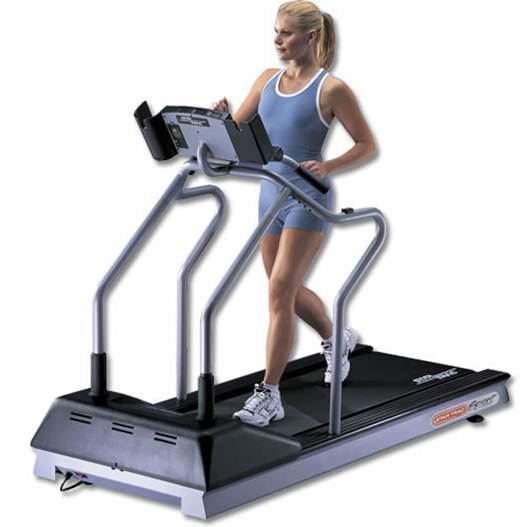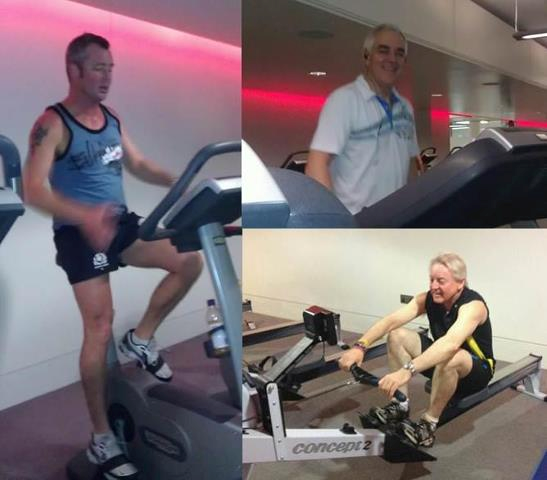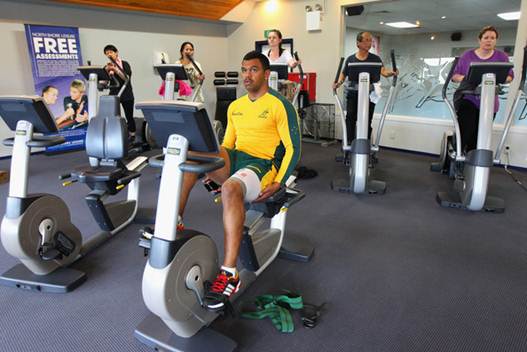6.
Tearing it up on the treadmill

If a brisk
walk on the treadmill does your body good, you can only benefit from creating
your own mini-mountain by raising the incline to up the challenge, right?
Wrong. If
you’ve increased the incline to the point where you have to hang on to the
rails for support, your body is receiving no benefit at all – in effect, you’ve
hut down your potential for burning kilojoules.
You’ll have
a far more effective workout if you walk at a pace, and incline, that leaves you
out of breath but still in control.
7.
When you’re getting squat for your effort
Squats
might work wonders for toning your thighs, but if they’re performed
incorrectly, they can be hell for your lower back and your knees.
“Get your
form right by engaging your core, keeping your chest open and your shoulder
back,” says Rossouw. “Keep your torso as upright as
possible while you squat – you may find it helps to look at a point straight
ahead of you or even on the ceiling, but be sure not to drop your gaze to the
floor. As you rise, protect your knees by driving them
outwards and pushing through your heels”
8.
The benchmark

It’s all
too easy to lose your focus and arch your lower back while working on the bench.
To prevent
this, Rossouw suggest placing your feet on the bench
– or even putting them in the air, with your knees bent to a 90-degree angle,
to force your back down.
9.
Stand and deliver
Try to get
the most out of your standing sessions by keeping your feet placed squarely
under your hips with a slight bend in your knees.
Rossouw
also recommends locking your should blades. “You can
perform a range of movements form this position,” he says.
10. Planking
There’s
plenty of room for error while performing the plank, comments Melson.
“Although
you’re aiming to have your body in a straight line, from your neck to your
feet, many people find their bums in the air, or dipping their hips – a
position that places pressure on the shoulders and back.”
“Protect
these muscles by making sure that your shoulders are over your elbows, your
legs are straight and your feet are hip distance apart.”
“If it
helps, you can balance on your forearms instead of your hands.”
You tell us
Picking
sides

Michelle Cavé, 32, is a PR executive at an advertising firm in Joburg.
“I’ve
always focused more on running and cycling that other
exercises. This means that I’ve consistently worked the same group of
muscles – the outer ones – and ignored the others.
“Because of
this, I’ve build up the muscles on one side of my knee, while the other has
remained undeveloped – and it doesn’t help that I’ve never been a big one for
stretching. Now, the stronger muscles are pulling the kneecap from its central
position – and it’s very painful! I’ve visited a podiatrist, who suggested I
correct the problem by wearing sneakers that help support my ankles. A biokineticist has recommended stretches to strengthen the inner
knee muscles”
Machine
malfunction
Nonhlanhla
Mondlane, 30, is a freelance journalist from
Nelspruit.
“I’ve
learnt the hard way that, if you don’t use the gym equipment correctly, it can
be hazardous!
“On one
occasion, I tripped on a moving treadmill and fell, hurting myself quite badly.
“More
recently, I was using the deep chin assistant, and had grabbed onto the steel
framework to hoist myself up. I banged my leg quite badly. It felt a painful
wound, and a mark which only went away with use of tissue oil.
“Next time
I want to use the machines, I’ll definitely ask for a trainer’s advice first!”